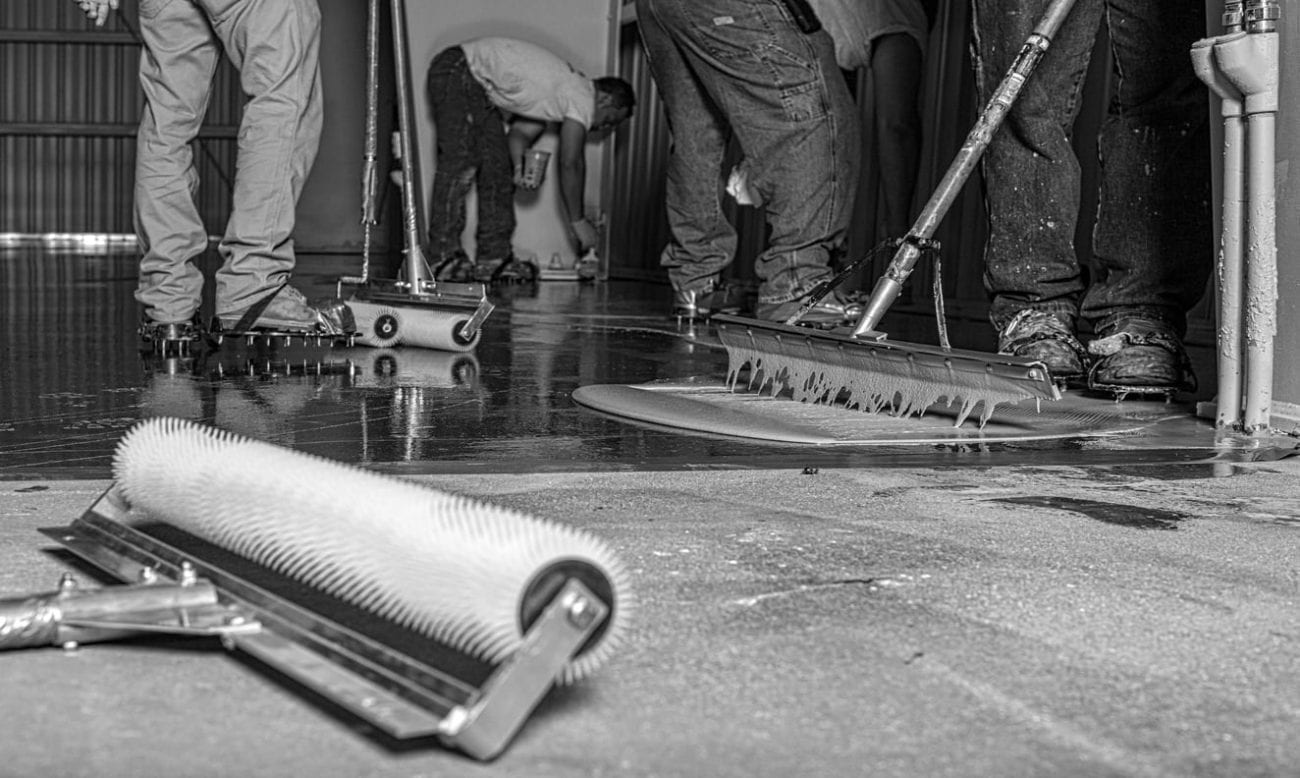Urethanes and polyaspartics are topcoating concrete sealers that are specially designed to adhere and bond to the surface of concrete slabs. Once properly applied to the surface, the sealers offer incredible levels of protection, leading to them often being referred to as the miracle concrete sealers. They both offer extensive heat resistance, comprehensive scratch resistance, resistance to abrasions and high foot traffic, as well as prevention of acid and chemical stains.
Due to their plethora of preventative and protective properties, urethanes and polyaspartics are typically in high demand for industrial warehouses and large retail stores, namely places that feature high levels of foot traffic or potentially damaging activity (such as lifting bales of product or driving with a forklift over the concrete). Urethanes and polyaspartics work to protect the concrete underneath from any and all types of damage.
They also, however, work best as part of epoxy floor systems. Epoxy floor systems are typically layers of concrete sealer that are applied one after another to increase the protection offered to your concrete floors. Most systems consist of an epoxy basecoat that is meant to adhere directly on the concrete substrate’s surface, followed by another epoxy coating to increase resistance to various problems. Now, after the first two epoxy coatings, many people choose to install a decorative, aesthetic piece by sprinkling in paint chips or decorative quartz (which is really just sand) onto the second epoxy coating. With this completed, the urethane or polyaspartic topcoat is applied to provide maximum, translucent protection.
The biggest, and really only, difference between urethanes and polyaspartics is a big one. Polyaspartics tend to be slightly more expensive because they have an exceptionally fast dry-time. No, really, it is quite exceptional. Polyaspartics tend to be the topcoating of choice for large retail stores that need to be open the next day: simply apply the polyaspartic coating overnight, and it will be completely dry in only a few hours. When compared to urethanes, the benefits and coverage are the same, by the dry-time is exceptionally different.
Our Take: The best urethane we have found is an aliphatic urethane Urethane 645 while a fast drying polyaspartic is Polyaspartic 745.

